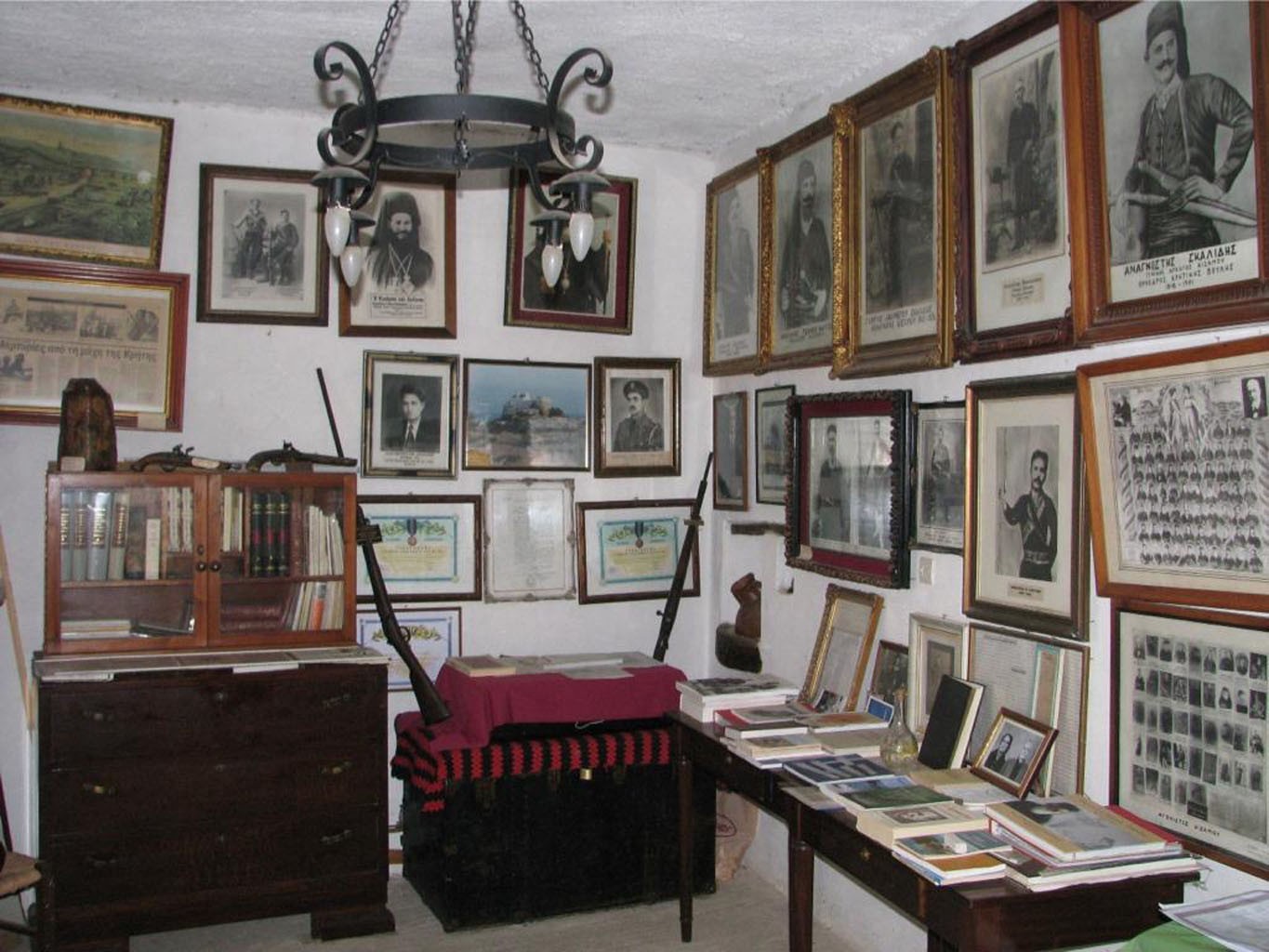
Emmanuel Skalidis was born in 1818 in Perivolia of Kissamos (according to another version he was born in Kythira, where his family had resorted after the declaration of the Greek Revolution) and in 1841 he participated as a simple fighter in the Cretan Revolution of that year. Indeed, he was distinguished for the bravery he showed in a battle that took place in Provarma Apokoronos.
Later, he took part in the 1858 revolution, this time as the captain of the province of Kissamos, after his election in Elos Innachorion. After the rebellion failed, in which he played an important role, he found refuge in the Greek kingdom.
In 1866 he returned to Crete to take part in the new revolutionary movement as one of the leaders of the revolutionaries of the Kissamos region. On October 12, 1866, he participated in the battle of Vafe Apokoron, where the rebels were defeated and in November of the same year in the failed siege of Kastelli of Kissamos, Chania. Indeed, later he was accused by Chr. Byzantium for lull during the siege, however, is the fact that, on the other hand, all the chieftains who participated in the siege had the same complaints about the attitude of Byzantium.
At the end of December 1866, Skalidis and his men were involved in a skirmish with Turkish forces at Palaiokastro, south of the prefecture of Chania between Sougia and Koustogerakos and on January 13, 1867, he participated with Kriari, Giannari and Zybracakis in a successful surprise operation against Turkish forces in Agia Roumeli, Chania. At the same time, in June of the same year he participated in a battle in the area of Kastelli.
After the repression of the revolution, Skalidis resorted to Greece. At the end of December 1877, during the Russo-Turkish War and the defeat of the Ottoman Empire, he and other exiled chieftains returned to Crete and led a new revolution. During the battles, Skalidis had his headquarters in Kounoupitsa, Chania. Eventually, he was captured and transferred to Constantinople where he remained prisoner for a year before being released after pressure from foreign embassies.
Later, despite his advanced age, he was one of the proponents of the revolution of 1895-1898, actively participating in the war operations: in particular, he took part in the battles of Voukolia – Dromonero (15 June 1896) and Roumata, of Voukolies, the tradition of Kandanos, the rise of the Greek flag in Kolymbari and the conflicts on the front of Kastelli.
In 1898, with the Creation of the Cretan State, Skalidis descended to the political arena, succeeding in the election of a Member of Kissamos, being the first among 18 candidates. At the same time, he was honored as the first president of the Cretan Parliament.
During the last years of his life, Skalidis lived in Athens and specifically at Sachtouris Street in Psyrri. From the state, Skalidis was granted a large area to Petralona, which he gave to the city of Athens in the will. At the end of November 1901, his state of health deteriorated due to hemiplegia. He died on November 30, 1901, after being hospitalized for eight days. His funeral was public spending in Athens in the presence of a crowd of people. The deacon was valued at the dead, while his coffers were placed in his coffin and the flag of the revolution of 1866.
Source Wikipedia
How To Get There
The Museum is in Perivolia 25 km away from Kissamos in the south. It should only take you 30 min or so to get there by car. Plenty of things to see along the way.
-
Stops on the way, Topolia Gorge, Agia sofia cave/Church.
-
Once in perivolia you could walk a part of the Stopmio gorge.
-
Open 09:00 – 12:00 and 17:00 – 19:00 every day.
-
Mr. Zacharias the descendant of this Historic bloodline will welcome you at the museum.( he is around 90 y.o)
-
When you are there you can feel the importance of this place and the history it holds.